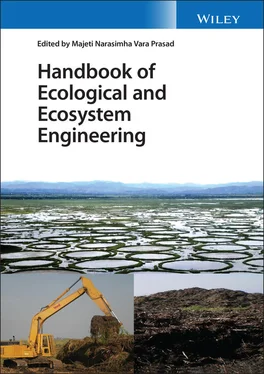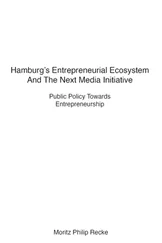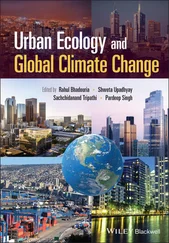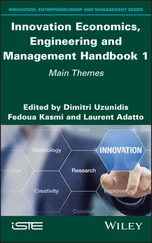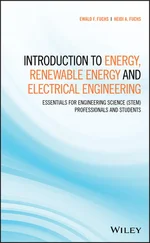Table 1.5 Articles on agroecology and ecosystem services.
| Salient summary |
References |
| Agroforestry boosts soil health in the humid and sub‐humid tropics. |
Muchane et al. [58] |
| Contribution of agroecological farming systems to ecosystem services |
Boeraeve et al. [59] |
| How can integrated valuation of ecosystem services help to understand and steer agroecological transitions? |
Dendoncker et al. [60] |
| Examining multifunctionality for crop yield and ecosystem services in five systems of agroecological intensification |
Garbach et al. [61] |
| Intersection between biodiversity conservation, agroecology, and ecosystem services |
Liere et al. [57] |
| How to implement biodiversity‐based agriculture to enhance ecosystem services: a review |
Duru et al. [62] |
| A social–ecological analysis of ecosystem services in two different farming systems |
Andersson et al. [63] |
| Quantifying the impacts of ecological restoration on biodiversity and ecosystem services in agroecosystems: a global meta‐analysis |
Barral et al. [64] |
| Integrated crop–livestock systems: strategies to achieve synergy between agricultural production and environmental quality |
Lemaire et al. [65] |
| Conservation agriculture and ecosystem services: an overview |
Palm et al. [66] |
| Agroecological practices for sustainable agriculture: a review. |
Wezel et al. [67] |
| Framework for systematic indicator selection to assess the effects of land management on ecosystem services |
van Oudenhoven et al. [68] |
| The value of producing food, energy, and ecosystem services within an agroecosystem |
Porter et al. [69] |
| Measures of the effects of agricultural practices on ecosystem services |
Dale and Polasky [70] |
| Agroecology: the ecology of food systems |
Francis et al. [71] |
Ecological engineering must be used to engineer, i.e. to create, agricultural models capable of producing food in sufficient quantities to meet the demands of a growing population while conserving ecosystem services. The practice of ecological engineering focused on encouraging society to adapt to Nature (and not the other way around) can be a great ally in developing productive models aimed at reducing the impacts of agriculture on ecosystem services and exploiting their benefits for both humans and nature.
Ecological engineering must always be thought of as a multidisciplinary science. Efforts from specialists aimed at a common goal can help strengthen the integrative approach necessary for the maintenance and strengthening of services provided by different ecosystems.
1.4 Final Considerations: Challenges for the Future
Ecological engineering is a promising field of knowledge [72], as well as the only academic discipline capable of merging ecology and engineering based on the idea that ecological principles and management can be combined in all ecosystem types, from wildlands to cities, current ecosystems, and the analog ecosystems of the future [73]. Yet there are many challenges to be faced, such as those addressed by Jones [74]: ethical, relational, and intellectual.
The ethical challenge requires explaining the meaning of the statement that ecological engineering integrates human society with its natural environment to benefit both, which encompasses its practices [74]. This perspective must also contemplate the reasoning about, and the application of, ecosystem services, which are primarily anthropocentric. As expressed in this chapter, why not try a new concept of nature services, which also assesses the benefits of ecosystems for other ecosystems rather than just for humanity? This new concept would relate well to the aspirations proposed by ecological engineering since its origin – i.e. integrating humanity into its natural environment for reciprocal benefits.
The relational challenge refers to developing and strengthening relationships with other academic disciplines [74], ancestral knowledge, longings, and viewpoints of civil society. Environmental sciences, agriculture, engineering, and earth and social sciences are the primary scientific partners of ecological engineering today; however, it is possible to expand its dialogue with computer sciences, materials sciences, energy, chemistry, biochemistry, and countless others. On the other hand, companies and professionals in the business, education, and political fields are the primary social partners of ecological engineering, although partnerships with health sciences, philanthropic entities, and traditional communities can be easily added and expanded.
Ecological engineering was founded by intellectuals who had different viewpoints about ecosystems due to ecological and engineering perspectives deriving from their academic lineage. The intellectual approximation of perspectives about ecosystems to unify the key principles of this science in a way that is useful, coherent, understandable, and accessible to all is a challenge that requires significant efforts from the academic community [74].
Facing these challenges must be thought of in an integrated way; it requires the assumption of partnerships among professionals from different fields and fruitful dialogue with constituted powers, communities, and social actors. The task is arduous, but it can be implemented if every individual is willing to communicate and redefine their knowledge, based on their experience, to incorporate new perspectives and build a stronger knowledge base.
1 1 Costanza, R., dArge, R., de Groot, R. et al. (1997). The value of the world's ecosystem services and natural capital. Nature 387: 253–260.
2 2 Nunes, F.C. (2016). Por uma nova Geografia Física: razão‐ação‐emoção. Caderno de Geografia 26, número especial 2: 380–396. https://doi.org/10.5752/p.2318‐2962.2016v26nesp2p380.
3 3 Unger, N. M., 2000. O encantamento do humano: Ecologia e espiritualidade. Edições Loyola, São Paulo, Brasil. 2ª edição. 94p.
4 4 Taleb, N.N., 2012. Antifragile: Things That Gain from Disorder. Ed.: Random House. 544p.
5 5 Taleb, N.N. (2010). The Black Swan: The Impact of the Highly Improbable. Ed.: Random House, 2ed., 444p.
6 6 Heisenberg, W. (1958). Physics and Philosophy: The Revolution in Modern Science. Harper & Brothers.
7 7 von Goethe, J. (1997). Máximas e reflexões. Tradução de Afonso Teixeira da Mota. Lisboa: Guimarães Editores.
8 8 Odum, H.T. et al. (1988). Environmental Systems and Public Policies. EUA: University of Florida Press.
9 9 Mitsch, W.J. and Jorgensen, S.E. (1989). Ecological Engineering, an Introduction to Ecotechnology, 472. New York, NY: John Wiley.
10 10 Mitsch, W.J. (1995). Ecological engineering: from Gainesville to Beijing – a comparison of approaches in the United States and China. In: Maximum Power. The Ideas and Applications of H. T. Odum (ed. C.A.S. Hall). USA: University Press of Colorado.
11 11 United Nations (UN). (1987). Report of the World Commission on Environment and Development: Our Common Future.
12 12 Straskraba, M. (1993). Ecotechnology as a new means for environmental management. Ecological Engineering 2: 311–331.
13 13 Wulf, A., 2016. A invenção da natureza: A vida e as descobertas de Alexander von Humboldt. São Paulo, EditoraPlaneta, 1 ed.
14 14 Ehrlich, P.R. and Ehrlich, A. (1981). Extinction: The Causes and Consequences of the Disappearance of Species. New York: Random House.
15 15 Nahlik, A.M., Kentula, M.E., Fennessy, M.S. et al. (2012). Where is the consensus? A proposed foundation for moving ecosystem service concepts into practice. Ecological Economics 77: 27–35.
Читать дальше
